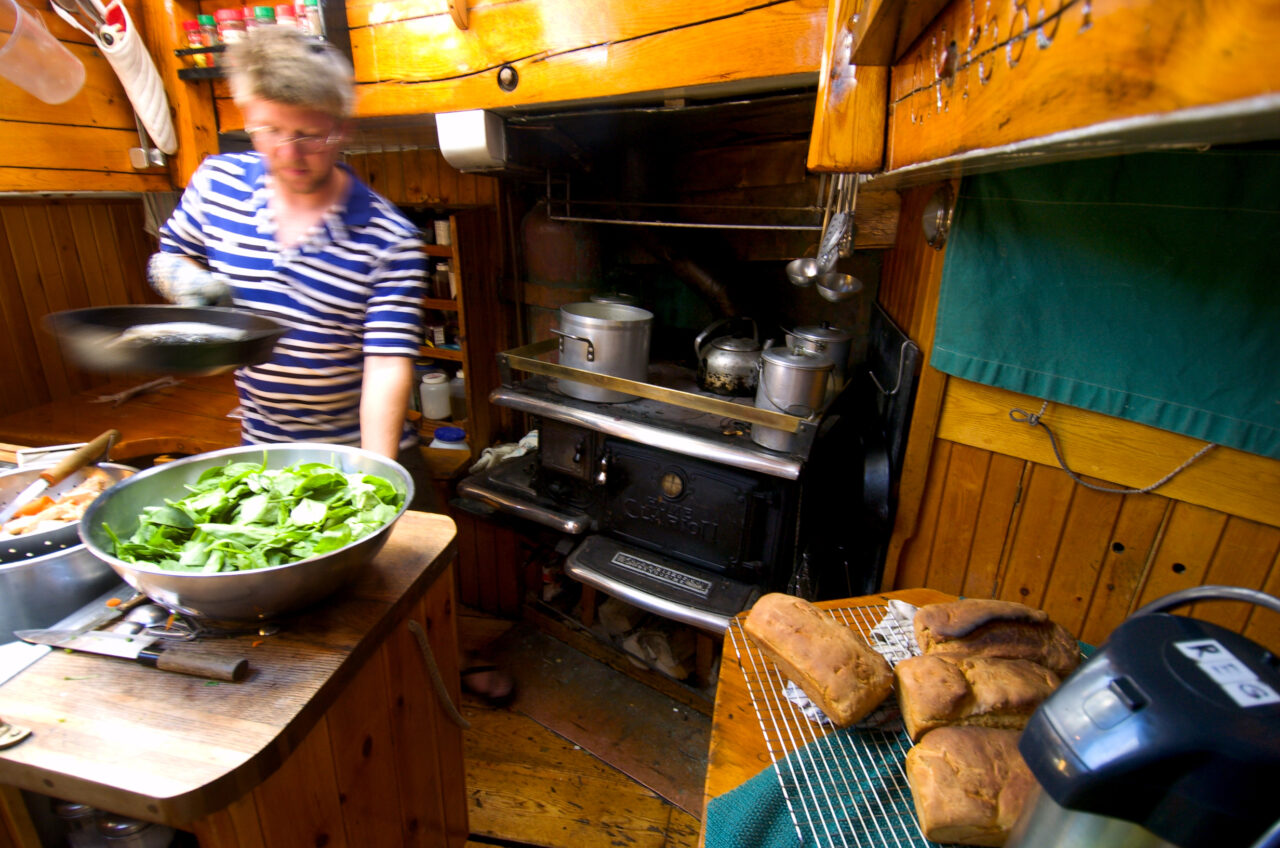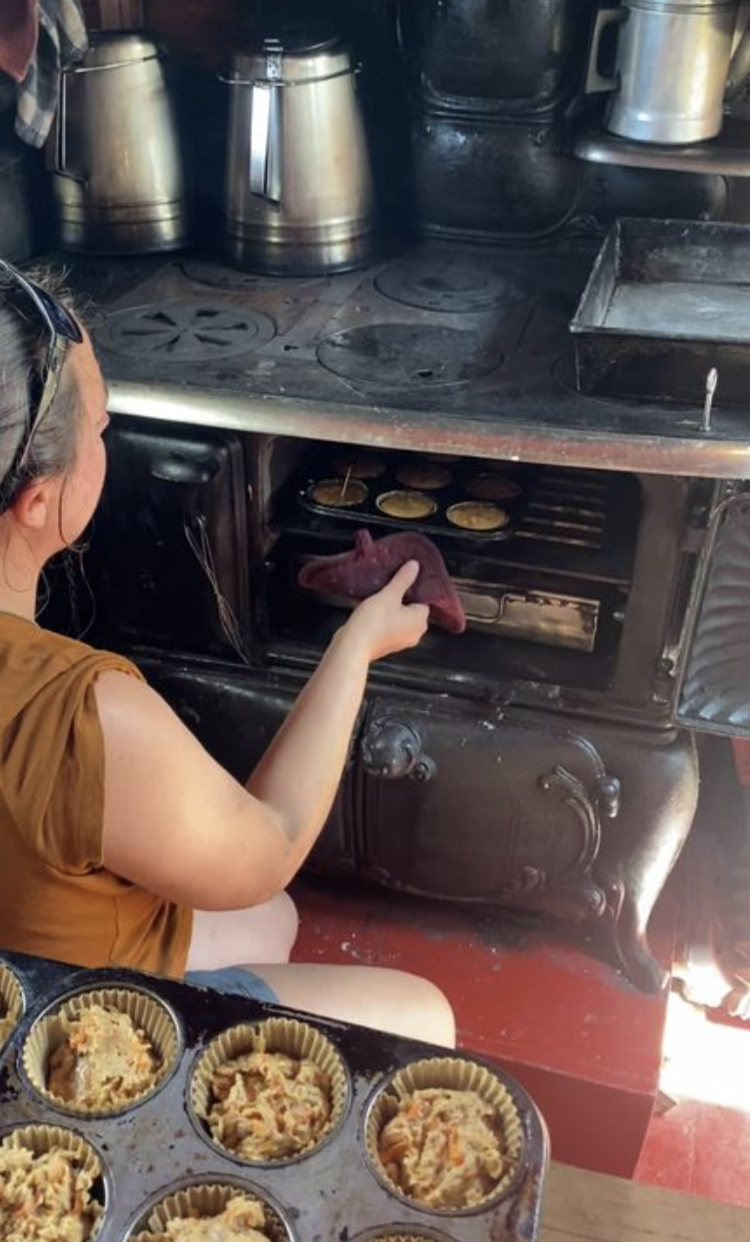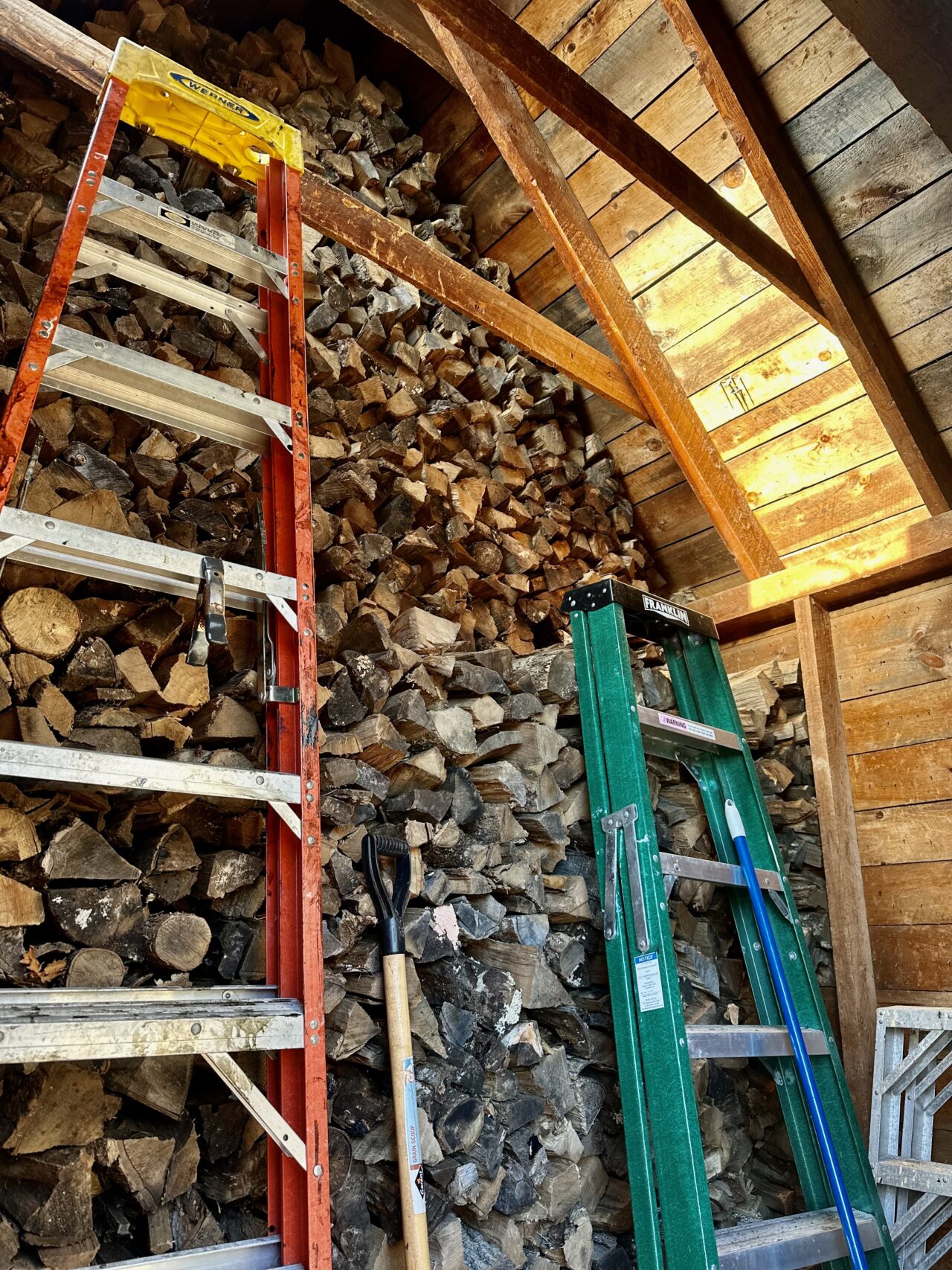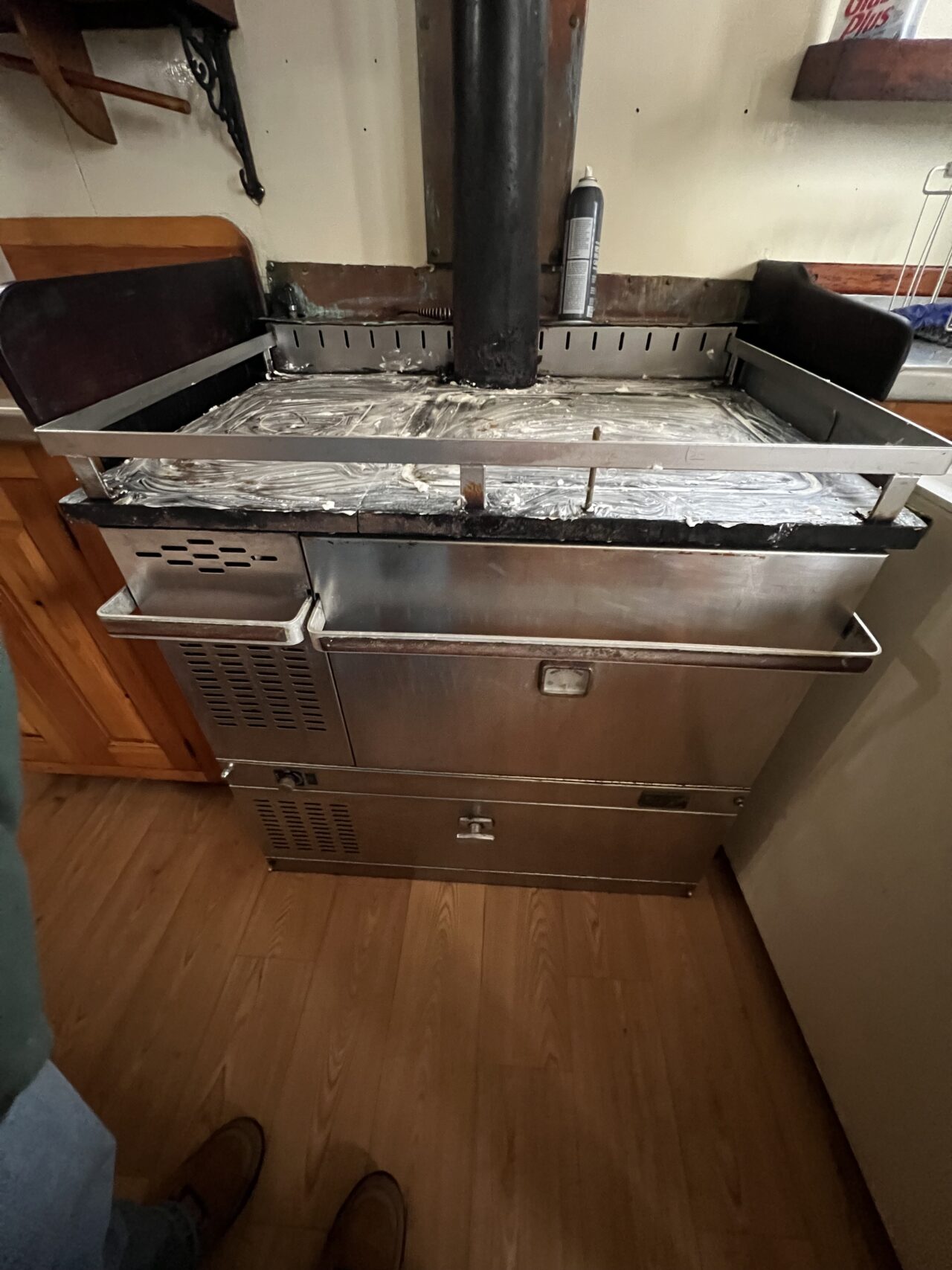Woodstoves and woodpiles

One of the most surprising aspects for first-time windjammer travelers is witnessing the astounding culinary feats achieved by our galley crews in their compact and efficient galleys which are equipped with wood-burning or kerosene stoves. The ingenuity and skill of our chefs shine through as they craft remarkable meals and delightful baked goods on these unconventional stoves. However, mastering these stoves is no small feat.
There’s a definite learning curve for new windjammer cooks. Unlike modern stoves, cooking on a wood cookstove requires a bit more attention and finesse. The cooks have to get to know their stove – learn its hotspots and heating time, learn to gauge the intensity of the fire, how to position the cookware strategically, and how to carefully tend to the fire. But it’s worth it! The slow even heat seeps into the food, infusing it with a distinct flavor that simply can’t be replicated. It’s a beautiful blend of tradition and practicality, creating meals that are not just delicious, but also carry with them the warmth of a bygone era.
The day begins early for the cook, who diligently starts the stove around 4am to ensure it reaches the right temperature for brewing coffee by 6am. This reliance on traditional cooking methods, without electric appliances, adds a unique charm to the culinary experience aboard our windjammers.

And by the way, the ingenuity doesn’t stop with the cooking. Did you know that the cookstoves are also used to heat all the water on board? The water can be piped right through the stove. Yep, there’s plenty of hot water, thanks to these stoves.
In the fall when the sailing season comes to an end, the captain and crew turn to prepping wood for the next year. The windjammers with wood cookstoves typically use three to five cords of hardwood, which they chop and stack each fall and winter. Even the windjammers that use kerosene stoves need to split their fair share of wood as each windjammer supplies its own wood for the lobster bake. Following Leave No Trace principles, each windjammer carries on and off its own supplies, leaving the island as it was when they got there.
Once the wood is stacked and the boats are covered and winterized, the captains finally get some rest before turning to their spring worklists – speaking of which, follow us on social media to see some of the winter projects that our captains are working on!


Categories: Behind the Scenes, Food and Recipes



